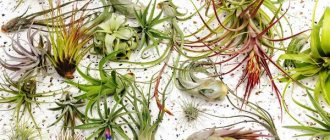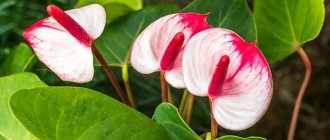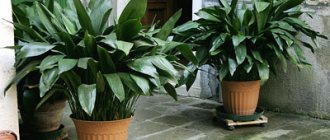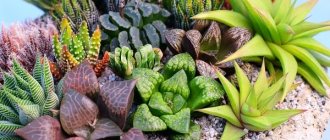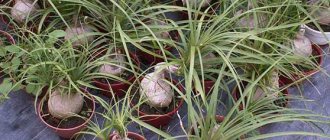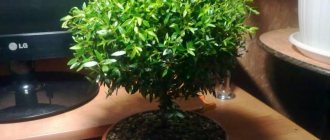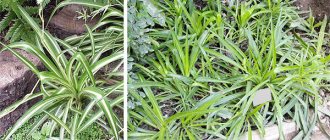The gardenia flower is a plant native to the tropics. Many gardeners agree that it is very capricious and requires careful care.
Considering that there are a sufficient number of varieties, the most optimal for home conditions is jasmine. If favorable conditions are created, this flower will delight you for a long time.
What is necessary?
Gardenia jasmine will fit well into any room with any interior. The apartment will be filled with comfort, and thanks to its unpretentiousness, it will fill the room with grace for a long time. Therefore, you need to take care of favorable conditions for the plant. Here are a few basic rules.
First of all, keep the soil moderately moist. Also, sudden changes in temperature are undesirable, and the most optimal is a twenty-degree temperature regime. The storage location should be filled with light, but direct sunlight falling on the plant is not suitable.
Flower growth is fastest in conditions with high humidity. And finally, try to use warm, purified, settled or rain water.
Some types of gardenia
According to various sources, the genus Gardenia contains from 60 to 250 species of often evergreen plants. Let's list just a few of them:
- Gardenia thunbergia
. A very tall, unpretentious and hardy plant with large snow-white flowers.
Gardenia Thunbergii is most suitable for garden summer maintenance
- Gardenia Taitensis
. The flower petals of this species resemble propeller blades.
Tahitian varieties of gardenia have quite large flowers (in the photo - next to the flower of the more common gardenia jasminoidea (jasminoid)
- Gardenia Tubifera
. Showy yellow flowers against light foliage.
Gardenia Tubifera has several varieties, but its flowers are always yellow, with dense petals in the shape of propeller blades
- Gardenia Kailarsenia
(Vietnamese). It is distinguished by large flowers with six petals.
Vietnamese gardenia flowers are very large in size. Like many other varieties of gardenia, during the fall period its petals curl slightly
- Gardenia Brighamii
(Hawaiian).
This species has almost disappeared in nature. Its white flowers consist of six petals and have a very strong aroma.
Hawaiian gardenia is known for its strong spicy, warm aroma
- Gardenia Radicans
. Representative of a dwarf species. Some varieties of this species have variegated leaves.
Small bushes of gardenia Radicans look very good in landscape compositions directly near the house, and in addition give a strong, pleasant aroma
- Gardenia Citriodora
. A rare variety with a delicate scent of flowers of five petals, similar to a lily.
The rare Gardenia Citriodora has pinkish petals.
- Gardenia Kula
. Because of its large yellow flowers, this species is sometimes called golden gardenia.
Gardenia Kula (golden gardenia) is one of the varieties of gardenia Tubifera
In indoor floriculture, the most popular species is gardenia jasmine , which has the second name “Cape Jasmine”. Many varieties of this species have been bred using the method of selection, which differ in size, shape, color of flowers and foliage, as well as flowering duration. Home Gardenia, as a rule, has a double texture of flowers. The bush itself can reach a height of 45-50 cm.
The homemade jasmine gardenia bush grows quite high, up to 45-50 cm
Light
As we have already mentioned, the lighting must be constant. The south side of the house is not suitable due to the presence of sunlight, so if possible, give the plant a western or eastern window.
In winter, try not to move or turn the flower, otherwise it may crumble and stop growing. Also, avoid drafts.
Interesting Facts
Blues singer Billie Holiday called gardenia her favorite. The dark-skinned diva loved how the snow-white petals contrasted with her hair.
Madonna herself has always shown an interest in the intoxicating aroma. Her favorite perfumes contain a note of gardenia.
Any flower has its own symbolic meaning. Interpretations may vary among different peoples and cultures. For the Japanese, gardenia means secret passion. And the Chinese see in her femininity, grace, aristocratic fragility.
In natural conditions, gardenia produces a strong aroma for a reason. Thus, the beautiful representative of the flora attracts insects. Butterflies and bees contribute to abundant flowering. Even bats come to pollinate flowers.
Various parts of the plant are used in folk medicine. It is believed that an infusion of leaves, bark, and flowers helps with headaches and insomnia, and has calming and antipyretic properties. Aromatherapists recommend the scent of gardenia to relieve emotional tension, stress and shock.
Temperature
In the warm season, gardenia at home requires approximately 22 degrees of heat. In winter, the flower will lay buds, and this requires a slightly lower temperature - from 16 degrees. However, do not exceed the specified limit for summer - the life process may slow down.
The air and soil must be at the same temperature - therefore strong changes are unacceptable. Two or three temperature jumps can completely ruin a flower.
Feeding rules
Enriching gardenia with nutrients is vital, otherwise it will not develop properly. Mineral complexes applied weekly and potassium-phosphorus fertilizers (used according to instructions) are used as fertilizing.
The use of long-acting complexes makes it easier for beginners. Nitrogen is added when the hydrangea fades, because its excess causes the growth of unwanted shoots.
To avoid causing unnecessary problems, it is better to use preparations marked “for flowering plants.”
How to water?
Home care requires strict adherence to water balance. It is noteworthy that depending on the season, the flower requires different amounts of moisture. For example, when it is actively growing and developing, abundant watering is necessary after the soil dries out.
During the demi-season period, the plant should be watered once every 3-4 days after the soil has dried. During the cold season, provide water supply at a minimum level.
Use slightly warm water - it should be settled, purified or rainwater. A small amount of lemon juice in the liquid will not be amiss.
When buds begin to appear, try to provide high humidity. It would not be superfluous to organize such conditions during the rest of the plant’s life.
After the flowers open, you should stop spraying the gardenia. First of all, because they are fragile and can change their color. A small container of water located near the pot will not be superfluous.
Selecting seeds for a greenhouse
It is very important to choose the exact variety of tomato that will be suitable for the greenhouse. There are special “greenhouse” varieties that should be given preference first of all. They grow well in a greenhouse and produce a high-quality and rich harvest. These include:
— Bull's heart. This species is characterized by very high productivity, large and pleasant-tasting fruits.
— Miracle of the Earth is the most ideal variety for greenhouse conditions.
— Samara has sweet and juicy fruits. This variety grows well in a polycarbonate greenhouse.
— Long keeper, with proper care, can produce a harvest of up to 4 kilograms per bush.
— Moneymaker is an early variety that can be planted in a greenhouse in March and harvested in early summer.
— Dina is an excellent variety for greenhouses, which produces a yield of up to 5 kilograms per bush.
There are also more exotic varieties.
Read: Washingtonia«>
Trimmings and pests
If dried leaves appear, it is recommended to remove them immediately. The same goes for weak shoots and flowers. When the plant has grown sufficiently, it will not be a bad idea to thin out the leaves a little.
Basically, all gardenia problems, such as falling flowers, faded leaves, unopened buds, are associated with insufficient lighting or temperature conditions.
If yellow stains appear, we recommend slightly acidifying the soil with lemon juice, and if the plant develops too slowly, there are probably pests.
Thus, we have examined the main aspects related to home care for this flower. All you need is the right approach, following a few basic rules, and you won’t need photos of gardenia - the plant will delight you live, on your window.
Reproduction methods
The plant is propagated in different ways:
Top cuttings (vegetative propagation method). When autumn or spring comes, flower growers cut shoots 8-9 cm long from gardenia. However, it is important that the temperature is not lower than 24 degrees.
They are planted in a substrate containing peat and river sand. Before this, to destroy parasites and prevent fungal diseases, it is important to dip the cuttings in a pale pink solution of potassium permanganate.Set up a greenhouse in a pot with planted cuttings: cover them with a jar or bag. The cuttings are ventilated every day and sprayed with warm, soft water. After 3-4 weeks, the seedlings are planted in a substrate that includes sand, peat and humus from under coniferous trees.
For reference. Some gardeners successfully root specially separated parts of the plant in water rather than in the substrate.
Using seeds. Drainage and soil are laid out at the bottom of the pot, seeds are placed on it and a five-millimeter layer of substrate is sprinkled on top.
They spray it generously and make a so-called greenhouse. After a month, the seeds sprout, they are carefully looked after, covering each sprout with a container. The grown sprouts are planted separately.
Watch a video about propagating gardenia by seeds and cuttings:
Basic growing rules - video
Sources
- https://floraprice.ru/articles/home/gardeniya-kapriznaya-krasavica.html
- https://tsvetem.ru/tsveti_v_dome/gardeniya-uxod-v-domashnix-usloviyax.html
- https://aroma.red/chto-takoe-gardeniya
- https://www.sadovniki.info/?p=6387
- https://selo.guru/rastenievodstvo/derorativ/garden
- https://komnatnyecvety.ru/gardeniya/
- https://happymodern.ru/gardeniya-foto-posadka-i-ukhod-v-domashnikh-usloviyakh/
- https://floriums.ru/gardeniya-sorta-i-vidy-foto-s-opisaniem
- https://CveTochki.net/scope/kak-ukhazhivat-za-gardeniei-adaptatsiya-rasteniya-posle-pokupki.html
- https://komnatnie-rastenija.ru/gardenija-zhasminovidnaja-uhod-v-domashnih-uslovijah/
- https://selo.guru/rastenievodstvo/derorativ/garden/osobennosti-uhoda-doma.html
- https://rastenievod.com/gardeniya.html
- https://www.7ya.ru/article/Kak-pravilno-uhazhivat-za-gardeniej-2017/
- https://ogorod-bez-hlopot.ru/uxod-za-gardeniej.html
- https://krrot.net/gardeniya-domashnyaya/
- https://ug-plastics.ru/komnatnye/kak-razmnozhit-gardeniyu-cherenkami.html
- https://Trizio.ru/gardeniya-85-foto-792
- https://kaktys.club/uhod/dekorativnye/gardeniya
- https://RoomFlower.ru/komnatnye-tsvety/krasivotsvetushhie/gardeniya-zhasminovidnaya-uhod-v-domashnih-usloviyah.html
- https://all-hybrids.ru/rasteniya-v-dome/zemlya-dlya-gardenii.html
Application in perfumery
Gardenia is often used as a central note in perfume compositions. It is often combined with the scents of other white flowers, such as lily of the valley.
The following combinations are effective:
- with a rose;
- jasmine;
- peony;
- citrus fruits;
- aromas of spices;
- neroli;
- ylang-ylang.
Famous perfume houses have legendary fragrances with the presence of gardenia: Chanel, Van Cleef, Annick Goutal, Roberto Cavalli, Gucci, Givenchy. Combined with honeysuckle and vanilla to create a warm ensemble for sensual seduction. The version with raspberries and Turkish lemon is suitable for romantic natures, coquettes and dreamers. With orange and white musk - for young adventure lovers.
Varieties
- Beauty, or Beauty in Latin , is perhaps the most popular variety with double snow-white flowers. Blooms profusely from early June until autumn.
- Belmont, otherwise Belmont , is distinguished by densely double flowers and is the most fragrant. Has increased resistance to diseases.
- Amy or Aimee is a bush with large flowers of perfect double shape, reaching 12 cm in diameter. Capable of blooming twice a year.
- Mystery or in Latin Mystery is a strong and hardy variety with large leaves that grows strictly vertically. The flowers are quite large, flat, terry in shape.
- Variegata, otherwise Variegata, is a variegated compact form with charming small flowers. The foliage color changes from green to light cream. The bush grows slowly and is ideal for growing in a pot.
- Radicans or Radicans is a dwarf variety with small glossy leaves and small double flowers. This variety begins to bloom later than its relatives and is ideal for growing using the bonsai technique.

